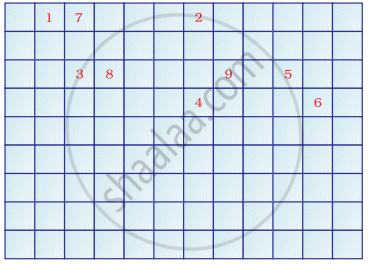Advertisements
Advertisements
प्रश्न
State whether the following statement is true of false:
The elements in a group have consecutive atomic numbers.
उत्तर
False
The elements in a period have consecutive atomic numbers.
APPEARS IN
संबंधित प्रश्न
Write the electronic configuration of two elements X and Y whose atomic numbers are 20 and 17 respectively. Write the molecular formula of the compound formed when element X reacts with element Y. Draw the electron-dot structure of the product and also state the nature of the bond formed between both the elements.
The element X forms a compound X2Y. Suggest an element that Y might be and give reasons for your choice.
An element A from group 14 of the periodic table combines with an element B from group 16.
(i) What type of chemical bond is formed?
(ii) Give the formula of the compound formed.
Identify the bond between H and F in the HF molecules.
An atom of an element has the electronic configuration 2,8,2. To which group does it belong?
Arrange the following elements in the order of their decreasing metallic character
Na, Si, Cl, Mg, Al
Identify and name the metals out of the following elements whose electronic configurations are given below.
- 2, 8, 2
- 2, 8, 1
- 2, 8, 7
- 2, 1
Complete the following cross word puzzle
Across:
(1) An element with atomic number 12.
(3) Metal used in making cans and member of Group 14.
(4) A lustrous non-metal which has 7 electrons in its outermost shell.
Down:
(2) Highly reactive and soft metal which imparts yellow colour when subjected to flame and is kept in kerosene.
(5) The first element of second Period
(6) An element which is used in making fluorescent bulbs and is second member of Group 18 in the Modern Periodic Table
(7) A radioactive element which is the last member of halogen family.
(8) Metal which is an important constituent of steel and forms rust when exposed to moist air.
(9) The first metalloid in Modern Periodic Table whose fibres are used in making bullet-proof vests

Complete the following triads by inserting the missing elements.
Li, ______, K
How are elements grouped into various families in the periodic table?
